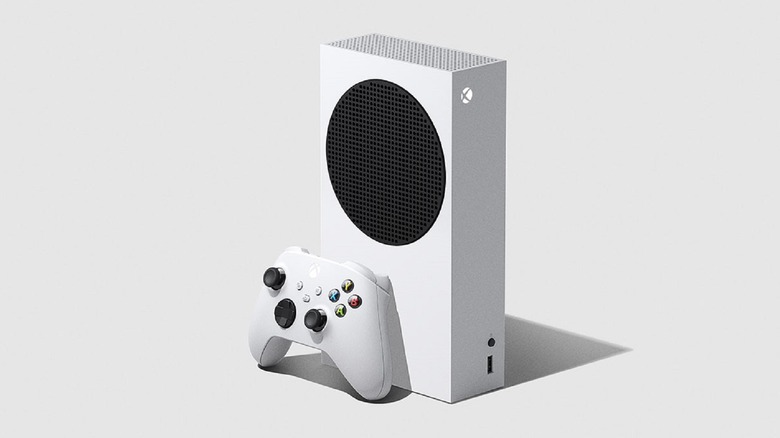Xbox Series S Almost Looked Way Different
Back when the Xbox Series S was nothing more than a rumor, there was tons of speculation about what purpose the console might serve and what it might look like. Would the Series S be a portal to xCloud streaming and look more like an Xbox-branded Roku Stick? Or would Microsoft lower the specs, chop the Series X in half and offer a cube-shaped console for the masses?
The Xbox Series S that ultimately arrived borrows more from the Xbox One S than anything. Its size and shape definitely evokes thoughts of that system. But that's apparently not the only form factor Microsoft toyed with when originally putting together the Series S. Thanks to a deep dive over on the website Medium, fans are finally learning a bit about some of the early design ideas Microsoft had for its $299 next-gen machine.
As it turns out, the Xbox Series S could've looked way different.
According to Microsoft's Joline Tang, who manages the company's design blog on Medium, Microsoft was hard at work on the look of the Xbox Series S in late 2017. Several hardware teams from the Xbox group reportedly visited gamers at their homes — remember when that was a thing people could do? — in order to get their thoughts on the potential design of a new console.
These members of the Xbox hardware team were equipped only with "black foam boxes," as presumably the specs for the Series S had not been nailed down yet. But the mission wasn't to gauge player interest in a slightly less powerful alternative to a more beastly machine; instead, it was to see which box players preferred having on their bookshelves or in their entertainment centers.
Microsoft arrived with a number of options, and in some other timeline, perhaps the world could've ended up with a much different looking Series S. In this one, however, it seems gamers took to the prototype that's closest to the one Microsoft unveiled. As principal designer Chris Kujawski put it, "We nicknamed the concept 'Slice' because it's like we took a slice off Series X."
Indeed, in its introduction video for the Xbox Series S, Microsoft made it a point to show that the smaller console could fit inside the Xbox Series X with plenty of room to spare. It is not just the tiniest Xbox in this upcoming generation, but the most compact Xbox ever built. It even manages to beat out the Xbox 360 E you might've forgotten about by now. It is very, very small.
The Series S also seems to blend into its surroundings a bit more than the Xbox Series X likely will. Microsoft's larger machine is a tower of power, so to speak. It's a statement. If you have a Series X in your entertainment center, people are probably going to notice it regardless of its orientation.
The Series S, meanwhile, can sit on a bookshelf without drawing a lot of attention to itself. Want proof? During an interview before the Series S was unveiled, Xbox head Phil Spencer had one sitting behind him and no one seemed to notice.
That's not to say the Xbox Series S won't pack a punch, however. Microsoft has done something that a lot of PC gamers will instantly recognize, but is relatively unprecedented in the console space. While the Xbox Series X is the top-of-the-line Xbox console for next-gen, the Xbox Series S offers a lot of the same benefits with what is essentially a scaled down GPU.
The Xbox Series S will run the same games as the Series X, but will drop the target resolution down from 4K to 1440p. With a few more concessions in storage space and system memory, Microsoft was able to trim the price of the Xbox Series S down to just $299. That is, by the way, the same price as the far less capable Nintendo Switch.
It'll be interesting to see how the next generation of gaming shakes out, and where the Xbox Series S ultimately ends up in terms of sales. The smaller machine's price point might make it more attractive, especially during a time when people are feeling a lot of economic uncertainty. The little Xbox that could, however, will also compete with the $399 all-digital version of the PlayStation 5, as well as the Xbox Series X and the standard PS5, both of which are priced at $499.
As for how the masses will take to its form factor, Microsoft seems to believe the design of the Xbox Series S is a winner. The Series S may not be the streaming stick predicted by some, nor the cube hoped for by others. In a world where the other options are a big black obelisk (the Series X) or a curvy alien contraption (the PS5), perhaps a small white box will sit better with some people.

